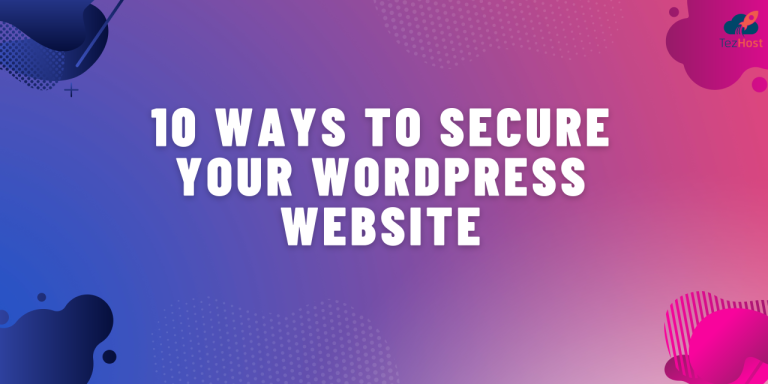Don’t compromise on the security of your WordPress website. Ensure its safety with the best practices: updating the core, enabling 2FA, and using security plugins.
WordPress is one of the most popular content management systems (CMS) worldwide, powering millions of websites. However, its widespread use makes it a prime target for hackers and malicious actors.
To protect your WordPress website and secure sensitive data, implementing robust security measures is essential. This article explores the best practices for WordPress website security, enabling you to strengthen your site against potential threats.
- Keep Your WordPress Core, Themes, and Plugins Up to Date Regularly updating your WordPress core, themes, and plugins is crucial for maintaining a secure website. Updates often include security patches that address vulnerabilities and protect against emerging threats. Enable automatic updates whenever possible and stay vigilant to ensure all components of your website are current.
- Use Strong and Unique Passwords Using strong and unique passwords for your WordPress admin account and other user accounts is a fundamental security practice. Avoid common or easily guessable passwords. Instead, opt for complex combinations of letters, numbers, and symbols. Consider using a reputable password manager to securely store and generate strong passwords.
- Implement Two-Factor Authentication (2FA) Two-Factor Authentication adds an extra layer of security to your WordPress login process. By requiring an additional verification step, such as a unique code sent to your mobile device, 2FA significantly reduces the risk of unauthorized access to your website. Utilize a reliable 2FA plugin to enable this feature for your WordPress website.
- Limit Login Attempts Limiting the number of login attempts helps protect your website from brute force attacks, which involve repeated login attempts using various username and password combinations. Implement a plugin that restricts the number of login attempts and temporarily blocks IP addresses after a certain number of failed attempts.
- Regularly Back Up Your Website Regularly backing up your WordPress website ensures you can quickly restore it in case of a security incident or data loss. Store backups in a secure location, preferably offsite or in the cloud. Numerous backup plugins are available for WordPress, enabling you to automate and schedule backups for peace of mind.
- Secure Your WordPress Admin Area Strengthen the security of your WordPress admin area by employing various measures, such as:
- Customizing the login URL to make it less predictable and harder to access.
- Implementing SSL/TLS encryption to protect data transmitted between users and your website.
- Restricting access to the admin area by IP address or using a VPN.
- Disabling file editing via the WordPress admin panel to prevent unauthorized modifications.
- Use Reliable Themes and Plugins Choose themes and plugins from reputable sources, such as the official WordPress repository or trusted developers. Regularly review and update your installed themes and plugins to ensure they are actively maintained and free from security vulnerabilities. Remove any unused or outdated themes and plugins from your website.
- Regularly Scan for Malware and Vulnerabilities Perform regular security scans on your WordPress website using security plugins or online scanners. These scans help identify malware infections, vulnerabilities, or suspicious activities. Promptly address any detected issues to maintain the integrity and security of your website.
- Employ Website Firewall and Security Plugins Utilize a reliable website firewall and security plugin to add an extra layer of protection to your WordPress website. These plugins often provide features such as malware scanning, firewall rules, brute force protection, and real-time threat monitoring. Select a reputable security plugin that suits your specific needs.
- Educate Yourself and Your Users Stay informed about the latest security practices, threats, and vulnerabilities affecting WordPress websites. Regularly educate yourself and your website users about best practices for creating strong passwords, recognizing phishing attempts, and avoiding suspicious downloads or links. Awareness and vigilance are key to maintaining a secure website.
Ensuring the security of your WordPress website is paramount in today’s digital landscape. By implementing the best practices outlined in this article, you can significantly enhance the protection of your website and safeguard it against potential threats. From keeping your WordPress core, themes, and plugins up to date to using strong passwords, enabling two-factor authentication, and employing security plugins, each step contributes to a more secure online presence.


